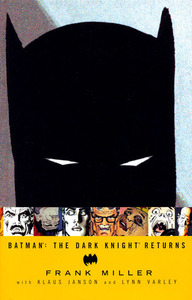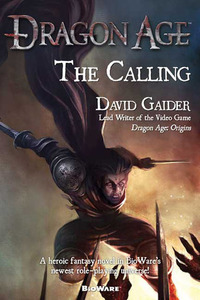Take a photo of a barcode or cover
authorrubyduvall's Reviews (154)
Idoru was actually pretty easy to read, discounting a handful of instances where I struggled to catch up to what was happening on the page. A friend recommended this book to me because of the often spot-on references to the quirks of Japanese culture—I lived in Japan nearly four years—and I did appreciate that a 17-year-old novel didn't do a bad job of predicting and portraying the ever-burgeoning convergence of power by the globe's media empires.
However, I felt like I didn't get enough detail of the most interesting events in Gibson's world. Sure, I can see the parallels between how Gibson's Japanese society dealt with the aftermath of a major earthquake, especially psychologically, to the still-resonating impact of the bombing of Hiroshima and Nagasaki on real-world Japan. I also appreciated how Chia ended up discarding her somewhat naive view of the world.
That said, I wanted to know more about the origin of, use of, and reaction to the nanomachines that rebuilt Tokyo. I wanted to know more about Rez's decision to marry the idoru in a way that wasn't second-hand. I wanted to know more about the idoru's awakening into sentience. I wanted to see the world's reaction, how Rez and Rei would "perform" their relationship, and how the landfill-real-estate deal shook out.
As for writing style, I found it unique and engaging overall, though I got a little weary of Gibson's overly generous use of metaphor and simile to describe the same characters over and over again. I know this one guy is heavily scarred and super huge yet graceful, having been reminded about twenty times, but I have no clue what Laney looks like.
Overall, a great and easy read. I recommend paying close attention to some of the cultural details of Tokyo. You'd be surprised how much of those details are not fictional!
However, I felt like I didn't get enough detail of the most interesting events in Gibson's world. Sure, I can see the parallels between how Gibson's Japanese society dealt with the aftermath of a major earthquake, especially psychologically, to the still-resonating impact of the bombing of Hiroshima and Nagasaki on real-world Japan. I also appreciated how Chia ended up discarding her somewhat naive view of the world.
That said, I wanted to know more about the origin of, use of, and reaction to the nanomachines that rebuilt Tokyo. I wanted to know more about Rez's decision to marry the idoru in a way that wasn't second-hand. I wanted to know more about the idoru's awakening into sentience. I wanted to see the world's reaction, how Rez and Rei would "perform" their relationship, and how the landfill-real-estate deal shook out.
As for writing style, I found it unique and engaging overall, though I got a little weary of Gibson's overly generous use of metaphor and simile to describe the same characters over and over again. I know this one guy is heavily scarred and super huge yet graceful, having been reminded about twenty times, but I have no clue what Laney looks like.
Overall, a great and easy read. I recommend paying close attention to some of the cultural details of Tokyo. You'd be surprised how much of those details are not fictional!
I'm not old enough to have read the original American Way of Death. Unlike other reviewers, I didn't find it at all difficult to understand when Mitford was talking about pricing or industry developments in the Sixties or the Nineties. Any prices not specifically called out as being "as of 199?" were obviously Sixities prices.
However, the Revisited version really could have done so much more to update the original content. The book is overwritten, especially to the modern reader, and I found myself skipping an entire chapter about English funerals. Slogging through the first dozen chapters did help me understand the unhappy journey that American funerals have taken from the days of a simple pine box and no embalming to the alarmingly costly and corpse-centric modern funeral, but the Revised edition should have taken the opportunity to cut at least a few thousand words and unnecessary tangents/anecdotes. Mitford's overall tone is also rather dry despite some of the hair-raising, predatory practices she describes.
And yes, #NotAllUndertakers are out to squeeze as much as they can from mourners, but Mitford includes so many damning quotes from the industry's own trade publications, exalting themselves in the most florid language while also outlining "sales scripts" and "display schemes" to lure mourners into buying the most expensive coffin. That hypocrisy along with a chapter on funeral homes lying to families about state law regarding embalming/cremation, another chapter on price-fixing, and another on tensions (based around money, of course) with cemeteries and clergy, is pretty clear evidence that Mitford's "bias" isn't just anecdotal.
That said, if you're the type of reader who just doesn't have the patience for plodding prose, you should consider skipping this book and finding a much more recent and accessible article to give you an overview of the funeral industry today (e.g. some funeral homes off "drive-thru" viewings, ffs).
However, the Revisited version really could have done so much more to update the original content. The book is overwritten, especially to the modern reader, and I found myself skipping an entire chapter about English funerals. Slogging through the first dozen chapters did help me understand the unhappy journey that American funerals have taken from the days of a simple pine box and no embalming to the alarmingly costly and corpse-centric modern funeral, but the Revised edition should have taken the opportunity to cut at least a few thousand words and unnecessary tangents/anecdotes. Mitford's overall tone is also rather dry despite some of the hair-raising, predatory practices she describes.
And yes, #NotAllUndertakers are out to squeeze as much as they can from mourners, but Mitford includes so many damning quotes from the industry's own trade publications, exalting themselves in the most florid language while also outlining "sales scripts" and "display schemes" to lure mourners into buying the most expensive coffin. That hypocrisy along with a chapter on funeral homes lying to families about state law regarding embalming/cremation, another chapter on price-fixing, and another on tensions (based around money, of course) with cemeteries and clergy, is pretty clear evidence that Mitford's "bias" isn't just anecdotal.
That said, if you're the type of reader who just doesn't have the patience for plodding prose, you should consider skipping this book and finding a much more recent and accessible article to give you an overview of the funeral industry today (e.g. some funeral homes off "drive-thru" viewings, ffs).
The book's plot doesn't quite jive with the events of the Dragon Age video games, and the combat scenes felt overly long, but I otherwise really enjoyed this story.
I'm writing this review after having binge-read the next four in the series, so obviously I liked this book and its sequels well enough to keep buying them, but some of my thoughts on this first book are based on things I've seen throughout the series so far. I'll be as vague as possible to avoid spoilers.
I've never been super drawn to stories about organized crime, but as a backdrop to a romance series, it has worked out well for this novel. You get a decent taste of the political maneuverings, violence, and criminal masterminding to understand the plot and how it drives the romance, but not so much that your eyes start to cross.
I also really appreciate the fine line the author has walked with her heroes not being mega-alphas but domineering enough in the sack to sate the reader. Her heroines are varied, and yet all of them stick up for themselves and often fend for themselves quite well.
My only disappointment with the books is mainly down to editing. I've seen more than one continuity error (e.g. a character wearing a pantsuit is later described in the same scene as touching her "dress"), and basic blocking is missing in many scenes (usually sex scenes). When I say "blocking", I mean making sure the narration doesn't forget whether a character is still half-dressed or carrying something. More than once, I've wondered with alarm whether a hero has disposed of his condom and tucked himself away before walking out into public. The narration doesn't say! Another time, a character is described as walking home carrying a bag of takeout for dinner, but it's completely forgotten in the rest of the scene. Did she drop it or put it down when interacting with another character? We don't know!
The blocking issue has gotten sliiightly better as the series has gone on, but the one thing that has never been addressed is, ahem...um, "fluids". The author is a fan of heroes fingering their heroines (I'm a fan!), but she *never* describes the hero wiping his hands, washing them, or licking them clean. Many, many times, a hero sneaks off with his heroine, gets her off, and they walk back out without having done any sort of clean-up. Is the hero walking around this fancy party with his lady's climax still shimmering on his fingers? Apparently!
Anyway, if that sort of thing doesn't bother you, you'd love this series! I'm excited for book #6 coming soon, and will be sure to read it ASAP!
I've never been super drawn to stories about organized crime, but as a backdrop to a romance series, it has worked out well for this novel. You get a decent taste of the political maneuverings, violence, and criminal masterminding to understand the plot and how it drives the romance, but not so much that your eyes start to cross.
I also really appreciate the fine line the author has walked with her heroes not being mega-alphas but domineering enough in the sack to sate the reader. Her heroines are varied, and yet all of them stick up for themselves and often fend for themselves quite well.
My only disappointment with the books is mainly down to editing. I've seen more than one continuity error (e.g. a character wearing a pantsuit is later described in the same scene as touching her "dress"), and basic blocking is missing in many scenes (usually sex scenes). When I say "blocking", I mean making sure the narration doesn't forget whether a character is still half-dressed or carrying something. More than once, I've wondered with alarm whether a hero has disposed of his condom and tucked himself away before walking out into public. The narration doesn't say! Another time, a character is described as walking home carrying a bag of takeout for dinner, but it's completely forgotten in the rest of the scene. Did she drop it or put it down when interacting with another character? We don't know!
The blocking issue has gotten sliiightly better as the series has gone on, but the one thing that has never been addressed is, ahem...um, "fluids". The author is a fan of heroes fingering their heroines (I'm a fan!), but she *never* describes the hero wiping his hands, washing them, or licking them clean. Many, many times, a hero sneaks off with his heroine, gets her off, and they walk back out without having done any sort of clean-up. Is the hero walking around this fancy party with his lady's climax still shimmering on his fingers? Apparently!
Anyway, if that sort of thing doesn't bother you, you'd love this series! I'm excited for book #6 coming soon, and will be sure to read it ASAP!









